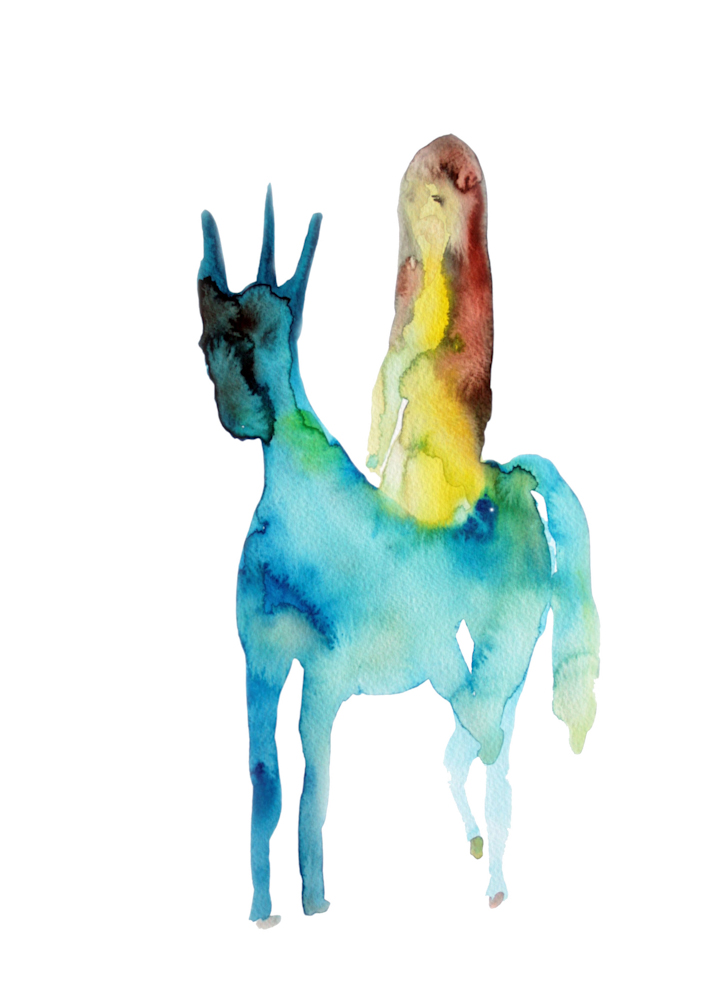
STELLA SUJIN “Who Wants To Live Forever”
Exhibition : 14th February – 16th March 2014
Opening : 14th February
6pm – 9pm
STUDIO C41
41 rue la condamine 75017 PARIS
작가노트
#1 영혼주의
미술가를 크게 두 분류로 나눌 수 있다고 생각한다. 먼저, 방법론에 관심을 갖는 사람들, 즉 예술과 문화사 안에서 시대의 바로미터를 제공할 수 있는 새로운 표현과 재현 양식을 탐구하며 그것을 작업의 문제의식으로 설정한 작가들 ; 그리고 마치 칸트나 들뢰즈가 자신들의 철학을 건축술로 비유하듯이 자전적인 컨텐츠를 재료로 집을 짓는 사람들. 나는 전자에 비해 후자에, 즉 비교적 개인적인 문제의식과 사명감으로 집을 짓는 사람들에 속한다.
나의 사고의 근간을 이루는 것은 영혼주의(Spiritualism)라는 철학의 한 분과인데, 간단히 말하자면 영혼주의란 육체와 영혼 사이의 관계를 탐구하는 학문이다.
이 학문의 간략한 소개를 위해 기억을 예로 들 수 있다. 기억은 차곡차곡 쌓여진 의식적인 경험을 근거로 대뇌피질에 저장된다고 알려져있지만, 마르셀 프루스트(Marcel Proust)가 잃어버린 시간을 찾아서(A la recherche du temps perdu)에서 말하듯이 마들렌 과자를 차에 적시는 순간 유년기의 무의식적 기억이 모두 되살아나듯이 – 뇌의 특정 부분에 위치한 저장고로부터가 아닌 영원으로부터 별안간 뛰쳐나오기도 한다.
정신 활동의 과학적인 추적(어떤 신경 혹은 호르몬에 의해 이러한 정신 활동이 가능하다는 전제)이 불가능한 이러한 난감한 경우에, 영혼주의 철학은 정신 활동과 육체의 접점이 어디인지를 찾는데 취하는 방법론은 이렇다 : 과학적인 설명이 가능한 부분은 과학에 의지하되 (특히 신경생리학과 정신의학) 가능 영역을 넘어선 문제들은 형이상학으로써 해결할 것.
내가 살고 있는 프랑스의 독자적인 전통이기도 한 이 철학은 그 명칭에서도 미루어 볼 수 있듯이 육체의 소멸이나 죽음 등의 사변적인 질문을 자주 던진다.
아리스토텔레스에서 시작하여 18세기의 자연과학자들, 의사들, 꽁디악(Condillac)과 같은 생리주의자들(Vitalists), 이후 베르그손(Bergson)에 이르기까지 영혼주의자들의 큰 관심사 중 하나는 죽음과 영혼, 즉 영혼의 육체와 독립적인 존재 가능성, 혹은 육체의 멸실 후의 영혼의 행방이었다.
기본적인 아이디어는 이렇다 : 쌍을 이루어 활동하는 육체와 영혼의 결합이 깨어짐이 < 죽음 >이라면< 살아있음 >은이결합이유지되고있는상태이며,이두상태모두 하나의 거대한 메커니즘에 속해 있다.
이 매커니즘을 이루는 각 요소들의 특성을 잘 아는 것은 살아있음과 죽음이 어떤 부품들의 작용과 정신적 속성에 의해 가능한지 파악하기 위해 중요하다. 따라서 영혼주의 안에서 우리는 의학과 형이상학, 심지어 신학을 동시에 존중하게 된다. 바로 이 점에서 나는 이 아슬아슬한 경계선의 학문에게 큰 매력을 느끼며, 영혼주의자들과 같은 문제의식을 내 작업을 통해 다루고자 한다.
#2 MEMENTO MORI 너의 죽음을 상기하라
나의 작업의 주제는 죽음이다. 죽음은 하나로 뭉쳐져있던 영혼과 육체의 결합이 어떤 결합인자의멸실로인해깨어지는상태이다. 반면 살아있음이 결합의 유지, 즉장기, 신경, 호르몬들이 활발히 작용을 하고 있는 의학적 육체가 영혼과 딱 붙어있는 상태이다.
나는 죽음과 살아있음의 메커니즘을 바람이 드나드는 풀무 또는 포대자루에 담긴 콩들이 바닥에 쏟아지는 장면 등에 비유하여 상상해왔다.
시각적 표현의 문제에 있어, 나는 주로 조각난 후 뒤엉켜진 신체들이나 정육점의 도살된 동물들 혹은 삶과 죽음 사이의 통로를 지나는 상상의 군상들의 모습을 즐겨 그리고, 해부학과 기독교 미술에서 많은 영향을 받는다.
특히 MEMENTO MORI 시리즈는 종교적인 영감의 보다 적극적인 발현으로, 본래 < 너의 죽음을 상기하라(Memento mori, remember you will die) >는 뜻의 메멘토 모리는 17세기에 나타났던 Vanity 양식 고유의 테마이다. Vanity란 지상의 모든 존재는 허무하며 인간의 삶 또한 불완전할 뿐이니 참회하고 겸허한 마음으로 신을 섬겨야 한다는 메시지를 전하는 알레고리들로 구성된 회화 양식으로, 그것의 대표적인 알레고리인 두개골은 삶의 유한함과 흘러가는 시간에 저항할 수 없는 인간의 무력함을 상징한다.
#3 죽음의 치장
멕시코의 보수적인 카톨릭과 토속 신앙이 합쳐진 다소 기이한 형태의 성물들과 마우리 족의 문신한 머리 미라인 토이모코(Tamoko), 나는 여러 문화권에 걸쳐 죽음을 치장하는 전통이 있음을 알게 되었다. 죽음을 치장하는 행위는 단순히 죽은 자를 기념하거나 공포를 미적으로 승화하려는 목적을 넘어 보다 주술적이고 제의적인 의미를 갖는다. 달리 말하자면 죽음 자체가 영생으로 가기 위한 필수적인 관문, 더 커다란 세계로의 진입을 알리는 시작이자 계기인 것이다.
나는 Vanity로부터 두개골 모티브를 차용하면서 단지 허무한 죽음만을 표현하고 싶지 않았다. 죽음은 화가 마크 로스코(Marc Rothko)가 열망하던 <수평선 넘어 영원의 세계 > 로의 진입, 영혼과 육체의 덩어리가 분해됨에 따라 이 둘의 존재를 처음으로 아주 강렬히 느끼게 되는 마치 빅뱅처럼 격정적이고 숭고한 순간이다.
바로 이 맥락에서 나는 죽음을 내 방식대로 치장하기 시작했다. 죽음을 상징하는 두개골 안은 수태고지, 성모의 탄생, 성모자, 예수의 부활과 승천 등의 기독교 성화의 테마와 해부학적 지식을 바탕으로 하여 새로운 시작을 염원하고 축복하는 의미의 그림들로 가득 채운 것이 그것이다.
내가 말하는 죽음의 치장은 죽음에 대한 찬양은 아니다. 내가 진정 표현하고자 하는 것은 삶과 죽음의 실체와 접하게 될 때 갖을 수 있는 감정이다. 그것은 공포나 슬픔, 아름다움에 대한 느낌일 수도 있지만, 우리가 이렇게 크고 무한한 메커니즘 안에 속해 있다는 사실을 깨달을 때의 숭고감과 경외감이다.
또한 이러한 죽음의 치장의 형식에 있어 나는 리사(Risa, 성화의 인물을 제외한 부분을 문양으로 장식, 금은 세공으로 덮어버리는 방식) 등의 성화의 양식들을 적극적으로 탐구하며 재해석하고자 하였다.